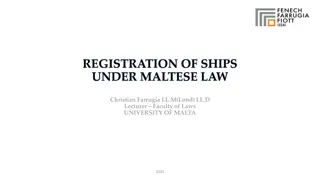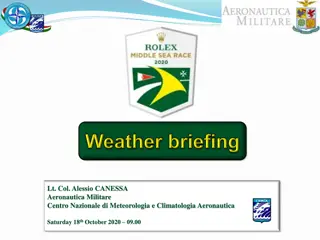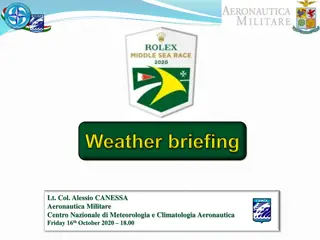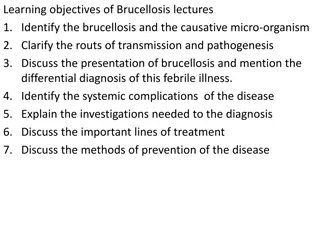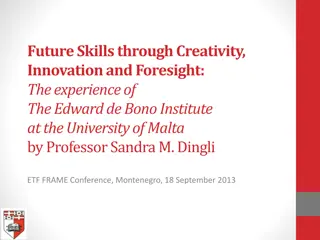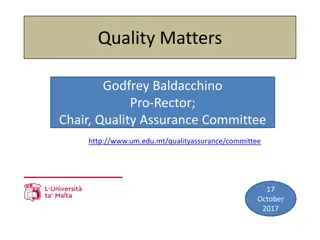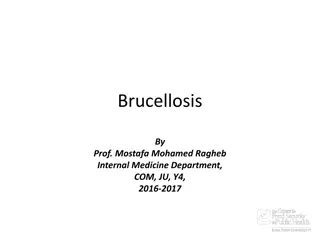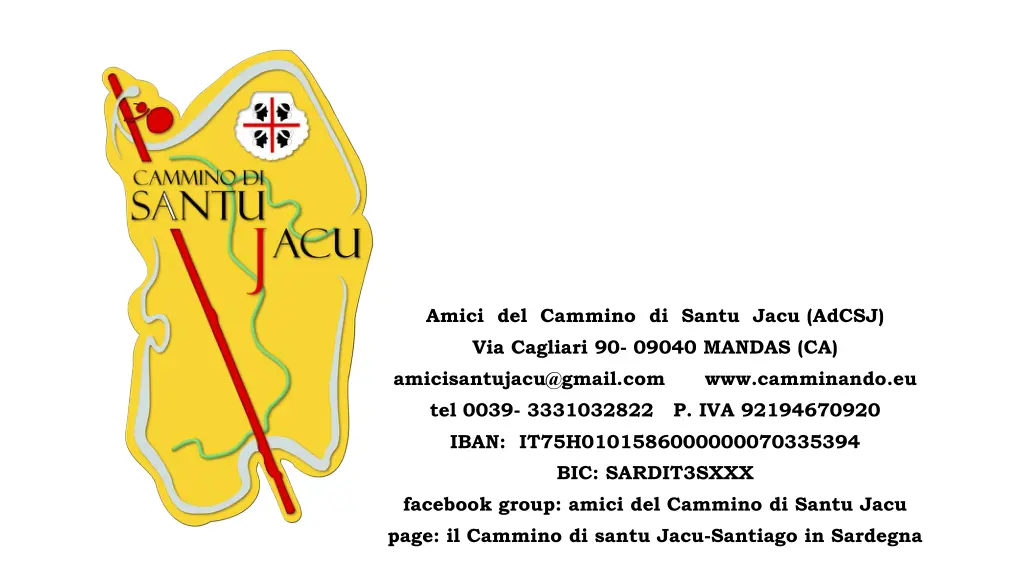
Ancient Journey of Apostle Saint James: The Mediterranean Way
Discover the historical hypothesis of Apostle Saint James' journey from Jaffa to Galicia and back to Jerusalem in 36 A.C. Our association researches ancient documents on Roman Era itineraries, focusing on points in the Mediterranean Sea such as Jaffa, Sardinia, and more. Explore the maritime and terrestrial paths of this significant pilgrimage.
Download Presentation

Please find below an Image/Link to download the presentation.
The content on the website is provided AS IS for your information and personal use only. It may not be sold, licensed, or shared on other websites without obtaining consent from the author. If you encounter any issues during the download, it is possible that the publisher has removed the file from their server.
You are allowed to download the files provided on this website for personal or commercial use, subject to the condition that they are used lawfully. All files are the property of their respective owners.
The content on the website is provided AS IS for your information and personal use only. It may not be sold, licensed, or shared on other websites without obtaining consent from the author.
E N D
Presentation Transcript
Amici del Cammino di Santu Jacu (AdCSJ) Via Cagliari 90- 09040 MANDAS (CA) amicisantujacu@gmail.com www.camminando.eu tel 0039- 3331032822 P. IVA 92194670920 IBAN: IT75H0101586000000070335394 BIC: SARDIT3SXXX facebook group: amici del Cammino di Santu Jacu page: il Cammino di santu Jacu-Santiago in Sardegna
THE MEDITERRANEAN WAY OF THE APOSTLE SAINT JAMES The ancient journey of the apostle Saint James in 36 A.C. from Jafa to Galicia and the return to Jerusalem. The Apostle Saint James sailed from the Port of Jaffa, came to the Island of Sardinia and from there to Spain, where he landed in Cartagena. From there he was to Granada where he preached and one of his disciples was martyred. From there he was to Ja n, then to C rdoba and M rida, Porto (Portus Calem) and Braga. He stayed in Galicia where he preached and remained for a long time, until the Virgin Our Lady appeared to him, calling him to Jerusalem. Arriving in Zaragoza, the Virgin appeared to him once more and told him to found a church there and dedicated it to her. Having finished the task, he went to Tarragona, where he embarked with the disciples he had, nine of whom had converted in Spain". (Breviario del 1054 del Patriarca Armeno di Gerusalemme) This is the hypothesis on which our association is working, studying and searching for ancient documents about maritime and terrestrial itineraries in the Roman Era for the 1st century AD. We have some fixed points in the Mediterranean Sea: Jaffa (Tel Haviv); Cyprus, Rhodes, Crete, Sicily, Malta: support points in the Roman era for a long sailing; Sardinia; Baleares;
Arrival to Cartagena (provincial capital), port very important in this period; from here along the Roman road XIX towards Lorca, Baza, Guadix; Granada, Ja n, Cordoba (provincial capital), the Roman road XI to M rida (provincial capital), cities of transit and preaching. From M rida the Roman road XII goes to Scallabis (Santarem) passing through Badajoz and from there the Roman road XVI climbs north, passing through Conimbriga (now Condeixa) and Aeminium (Coimbra), Portus Calem=Porto (Portugal didn't exist, it was Lusitania); Maia, Antas (Famali ao) up to Braga (provincial capital), an important place in Gallaecia. From Braga the Roman road XIX passes through Ponte de Lima, Labruja, Aqualonga, Tude-Tuy, Pontevedra, Caldas del Reis, Iria Flavia (Padron), Assegonia (the future Compostella), Martiae, Lugo (Lucum Augustum), node of the ancient ways. The return begins from Bergidum (Ponferrada, Villafranca del Bierzo), Astorga (Asturica). From Astorga, another node of the Roman roads, we have two options to get to Zaragoza and Tarragona: a) by L on, Burgos and Logro o (the current Camino de los francos); b) for Ba eza, Medina de Rioseco, Aranda del Duero, Burgo de Osma, Soria, Agreda, Tarazona, Borja, Alagon. The second is the one we choose to get to Zaragoza, city of the apparition of the Virgin, and which more or less corresponds to the Roman road XXXII, which then goes from L rida to the port of Tarragona, where the Ap stol Santiago embarked on his way back to Jerusalem.
- This project includes already existing routes or those which will be defined with the local associations of St James Ways: 1) from Lake Tiberias to Jerusalem to Jaffa, local way 2) the island of Cyprus: E4 3) the island of Rhodes: 4) path of the island of Crete: E4 5) path of the island of Malta 6) the island of Sicily: Il Cammino di san Giacomo - the Way of saint James 7) the island of Sardinia: il Cammino di santu Jacu - "the Way of santu Jacu-Santiago" 8) the Balearic Islands 9) walk from Cartagena to Granada (300km) 10) via Mozarabe from Granada to Ja n and Cordoba (210 km) 11) via Mozarabe de la Plata from Cordoba to M rida (220 km) 12) walk from M rida-Badajoz to Santarem (250 km) 13) Camino Portugues from Santarem to Coimbra-Porto-Braga-Ponte de Lima-Tuy-Pontevedra- Caldas del Reis-Iria Flavia (Padron)-Assegonia (Compostela) (460 km) RETURN- 14) Camino Primitivo from Santiago to Lugo (60km) 15) Camino Franc s from Lugo to Astorga (170 km) 16) via della Plata from Astorga to Benavente (60km) 17) walk from Benavente to la Ba eza, Medina de Rioseco, Roa, Aranda del Duero, el Burgo de Osma, Soria (300 km) 18) road from S ria to Zaragoza (160 km) 19) Camino Catalano from Zaragoza to L rida and Tarragona (230 km).
In the Iberian Peninsula, the Way involves almost 2500km, more than 100 days walking, and by sea, touching all the ports, 40 days. The project includes associations from Italy, Spain, Portugal, Malta, Greece, Cyprus, Israel that are participating in Congress Jacobeo in 2018 in Matar and in the world Congress in Madrid in 2021.
SUMMARY OF THE PREVIOUS AND CURRENT ACTIVITY OF OUR ASSOCIATION. The "friends of the Camino di Santu Jacu (AdCSJ)" association was founded in 2010 by a group of pilgrims, from different origins, nationalities and experiences, who, having noted the absence of a Camino de Santiago in Sardinia, despite the existing tradition of pilgrimages and places of worship to St. James the Greater, they set about studying, elaborating, verifying the feasibility of a cultural, tourist, religious and sporting itinerary that can be covered walking, cycling, even by "differently abled" people in Sardinia.
From winter 2009, we studied the way and waymarked the itinerary, tested by our pilgrims, we make agreements with public and private accommodations, we do edition by a website and diaries. Now, twelve years after, the way of santu Jacu joint about 100 municipalities, waymarked with yellows arrows and stickers, with multilingual paper guides, web applications, accommodation and referrals in many places crossed. With regional agreement, this way was official in the year 2012 by the Tourism Department of the Sardinia Region and in June 2015 like a Saint James Way in Europe at the World Congress in Santiago by the Xacobeo, the FEAACS and the Oficina del Peregrino in Santiago. We follow working for free 12 years for developing this way.
THE MODERN WAY FROM MALTA TO COMPOSTELA In the modern times many roads are changed. For example, now the pilgrims need a ship from Malta to Pozzallo or Syracuse, Palermo to Cagliari, then from Porto Torres to Barcelona for walking the Mediterranean Camino to Santiago. We talked together and discuss the itinerary followed by the modern pilgrims and the future is open Thanks for your attention. Flavio Vandoni, President and Founder of the Association "Amici del Cammino di santu Jacu" (AdCSJ)



